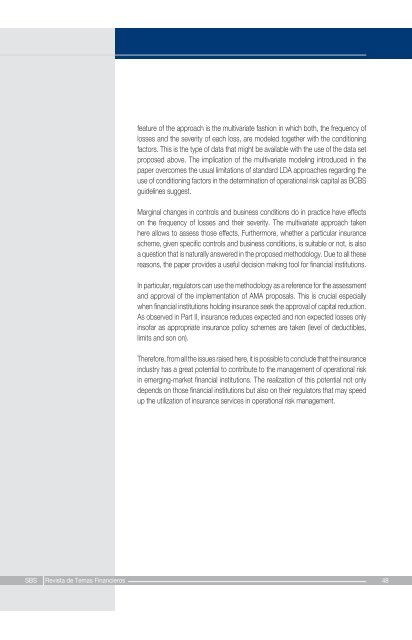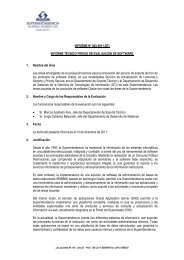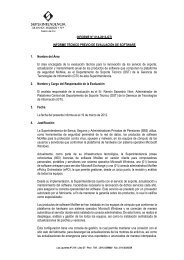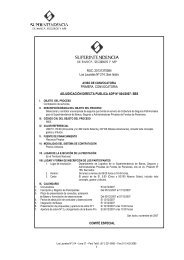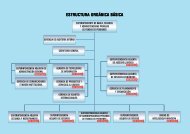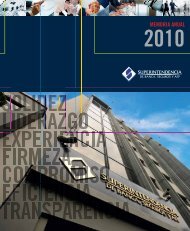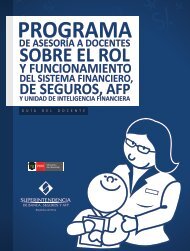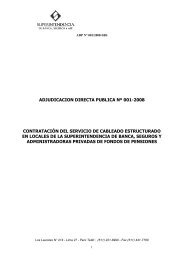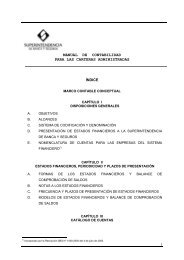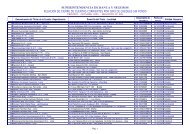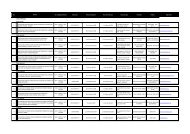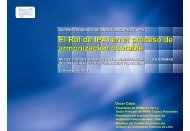Operational risk capital and insurance in emerging markets
Operational risk capital and insurance in emerging markets
Operational risk capital and insurance in emerging markets
You also want an ePaper? Increase the reach of your titles
YUMPU automatically turns print PDFs into web optimized ePapers that Google loves.
feature of the approach is the multivariate fashion <strong>in</strong> which both, the frequency oflosses <strong>and</strong> the severity of each loss, are modeled together with the condition<strong>in</strong>gfactors. This is the type of data that might be available with the use of the data setproposed above. The implication of the multivariate model<strong>in</strong>g <strong>in</strong>troduced <strong>in</strong> thepaper overcomes the usual limitations of st<strong>and</strong>ard LDA approaches regard<strong>in</strong>g theuse of condition<strong>in</strong>g factors <strong>in</strong> the determ<strong>in</strong>ation of operational <strong>risk</strong> <strong>capital</strong> as BCBSguidel<strong>in</strong>es suggest.Marg<strong>in</strong>al changes <strong>in</strong> controls <strong>and</strong> bus<strong>in</strong>ess conditions do <strong>in</strong> practice have effectson the frequency of losses <strong>and</strong> their severity. The multivariate approach takenhere allows to assess those effects. Furthermore, whether a particular <strong><strong>in</strong>surance</strong>scheme, given specific controls <strong>and</strong> bus<strong>in</strong>ess conditions, is suitable or not, is alsoa question that is naturally answered <strong>in</strong> the proposed methodology. Due to all thesereasons, the paper provides a useful decision mak<strong>in</strong>g tool for f<strong>in</strong>ancial <strong>in</strong>stitutions.In particular, regulators can use the methodology as a reference for the assessment<strong>and</strong> approval of the implementation of AMA proposals. This is crucial especiallywhen f<strong>in</strong>ancial <strong>in</strong>stitutions hold<strong>in</strong>g <strong><strong>in</strong>surance</strong> seek the approval of <strong>capital</strong> reduction.As observed <strong>in</strong> Part II, <strong><strong>in</strong>surance</strong> reduces expected <strong>and</strong> non expected losses only<strong>in</strong>sofar as appropriate <strong><strong>in</strong>surance</strong> policy schemes are taken (level of deductibles,limits <strong>and</strong> son on).Therefore, from all the issues raised here, it is possible to conclude that the <strong><strong>in</strong>surance</strong><strong>in</strong>dustry has a great potential to contribute to the management of operational <strong>risk</strong><strong>in</strong> emerg<strong>in</strong>g-market f<strong>in</strong>ancial <strong>in</strong>stitutions. The realization of this potential not onlydepends on those f<strong>in</strong>ancial <strong>in</strong>stitutions but also on their regulators that may speedup the utilization of <strong><strong>in</strong>surance</strong> services <strong>in</strong> operational <strong>risk</strong> management.SBS Revista de Temas F<strong>in</strong>ancieros 48


